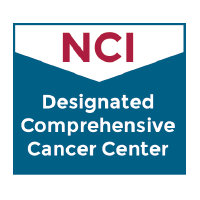
Breast Cancer
Breast cancer is the disease many women fear the most. It is the second most common cancer among women, with about 192,000 new cases each year. It remains the leading cause of death of women between ages 40 and 55. While known primarily as a woman's disease, men also develop breast cancer.
The good news is that survival rates today are higher than ever due to advances in diagnosis and treatment. At the UCSF Carol Franc Buck Breast Care Center, emphasis is placed on screening for early detection, more effective and less toxic therapies, patient education, and research that explores the causes, biology and behavior of the condition for future prevention and treatment strategies.
Breast cancer begins with abnormal cells developing in breast tissue. It can be confined to the breast or may spread beyond your breast or into other parts of your body. The most common type of breast cancer begins in the ducts designed to carry milk to the nipple. But cancer also may occur in the small sacs that produce milk, called lobules, or in other breast tissue. Breast cancer varies widely and the treatment options are selected to match your individual needs.
Types of breast cancer
Breast cancer may occur in several different forms, such as the five types below:
- Breast cancer in situ, DCIS and LCIS. Many breast cancers detected early, typically by mammography, are classified as breast cancer in situ or noninvasive cancer. These early cell changes may develop into invasive breast cancer. Two types of breast cancer in situ are:
- DCIS (ductal carcinoma in situ) means that abnormal cells are found only in the lining of a milk duct of the breast. These abnormal cells haven't spread outside the duct. There are several types of DCIS. If not removed, some may change over time and become invasive cancers, while others may not. DCIS is sometimes call intraductal carcinoma.
- LCIS (lobular carcinoma in situ) means that abnormal cells are found in the lining of a milk lobule. Although LCIS is not considered to be actual breast cancer at this noninvasive stage, it is a warning sign of an increased risk of developing invasive cancer. LCIS sometimes is found in a biopsy for another lump or unusual change detected on a mammogram.
- Invasive breast cancer. These cancer cells form in the ducts or the milk lobules and spread to the breast tissue around them. Tumors can be found during a breast exam or through screening, such as a mammogram. The size of the tumor, what it looks like under the microscope and whether it has spread to the lymph nodes determines the severity of the cancer, the therapies and the difference treatments will make.
- Metastatic breast cancer. Metastatic cancer begins in the breast, but spreads outside the breast through the blood or lymph system to other organs. Women usually develop metastatic disease in the months or years following the diagnosis of breast cancer. This cancer most commonly spreads beyond the breast to a patient's bones, lung, liver and brain.
- Locally advanced breast cancer. Inflammatory breast cancer is a rare but very serious and aggressive type of breast cancer. The breast may look red and feel warm. A patient may see ridges, welts or hives on the breast or its skin may look wrinkled. It is sometimes misdiagnosed as an infection.
- Recurrent breast cancer. Recurrent disease means that the cancer has come back or recurred after treatment. It may come back in the breast, in the soft tissues of the chest or chest wall, or in another part of the body.
Our approach to breast cancer
UCSF offers the highest quality breast cancer care in a respectful and supportive environment. We focus on effective and less toxic therapies, patient education and research that may lead to even better prevention and treatment strategies. Our team of surgeons, oncologists, radiologists, psychologists and nutritionists work together to heal the whole person, both physically and emotionally.
Awards & recognition
-

Among the top hospitals in the nation
-

Best in Northern California for cancer care (tie)
-

Designated comprehensive cancer center
UCSF Health medical specialists have reviewed this information. It is for educational purposes only and is not intended to replace the advice of your doctor or other health care provider. We encourage you to discuss any questions or concerns you may have with your provider.





